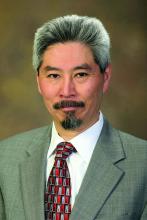Could colchicine help?
In another recent study, researchers conducted a post hoc analysis of a randomized clinical trial of the anti-inflammatory drug colchicine, finding that the use of colchicine at 0.5 mg daily was associated with a lower incidence of total knee and hip replacements (TKR, THR). In that study, 2,762 participants received colchicine, while 2,760 received placebo during the median follow-up of 28.6 months. During the trial, TKR or THR was done in 68 patients (2.5%) of those in the treated group and 97 patients (3.5%) in the placebo groups. That resulted in an incidence rate difference of –0.40 [95% CI, –0.74 to –0.06 ] per 100 person-years.
The authors wrote that the results suggest that “colchicine may slow the progression of OA, but this needs to be confirmed in an appropriately designed prospective placebo-controlled trial.”
Independent perspective
The new Boston University study supports the idea that there may be a larger subset of patients that may have a calcium mineralization component, said C. Kent Kwoh, MD, professor of medicine and medical imaging at the University of Arizona, Tucson. He reviewed both studies and provided perspective. He is an editorial advisory board member for MDedge Rheumatology.
The study by Dr. Liew and colleagues shows that “there is an association of crystal deposition not just in the cartilage, but various parts of the joint.” He emphasized the study found only an association and that more study is needed.
As for the colchicine study, he said, it “really shows there is potential at least within some individuals where it may decrease symptoms to the point where people are less likely to need joint replacement.” That analysis follows some previous research, some of it shorter term, finding that colchicine was not beneficial.
Takeaways
Would colchicine be worth a try in patients who have knee pain and calcium mineral deposits?
Dr. Neogi noted that a formulation of colchicine (Lodoco) was recently approved by the Food and Drug Administration to reduce the risk of myocardial infarction and other cardiovascular disease. While she does not advocate adopting a practice without evidence, she suggested if someone has both mineralization and cardiovascular disease, along with difficulty managing symptoms with established treatments, it might be worth a try, if no contraindications exist.
Dr. Kwoh agreed it may be worth a try, given that it is “relatively safe and relatively inexpensive.”
On one point all agreed: More research is needed.
Dr. Kwoh, Dr. Neogi and Dr. Liew have no relevant disclosures.


